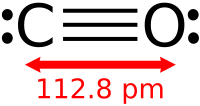
Photo from wikipedia
Reactivity studies on catalytic transition metal clusters are usually performed on a single global minimum structure. With the example of a Pt13 cluster under a pressure of hydrogen, we show… Click to show full abstract
Reactivity studies on catalytic transition metal clusters are usually performed on a single global minimum structure. With the example of a Pt13 cluster under a pressure of hydrogen, we show from first-principle calculations that low energy metastable structures of the cluster can play a major role for catalytic reactivity and that hence consideration of the global minimum structure alone can severely underestimate the activity. The catalyst is fluxional with an ensemble of metastable structures energetically accessible at reaction conditions. A modified genetic algorithm is proposed to comprehensively search for the low energy metastable ensemble (LEME) structures instead of merely the global minimum structure. In order to reduce the computational cost of density functional calculations, a high dimensional neural network potential is employed to accelerate the exploration. The presence and influence of LEME structures during catalysis is discussed by the example of H covered Pt13 clusters for two reactions of major importance: hydrogen evolution reaction and methane activation. The results demonstrate that although the number of accessible metastable structures is reduced under reaction condition for Pt13 clusters, these metastable structures can exhibit high activity and dominate the observed activity due to their unique electronic or structural properties. This underlines the necessity of thoroughly exploring the LEME structures in catalysis simulations. The approach enables one to systematically address the impact of isomers in catalysis studies, taking into account the high adsorbate coverage induced by reaction conditions.
Journal Title: Journal of the American Chemical Society
Year Published: 2018
Link to full text (if available)
Share on Social Media: Sign Up to like & get
recommendations!